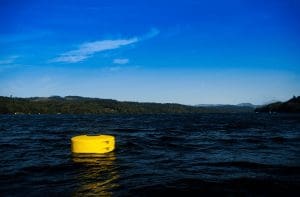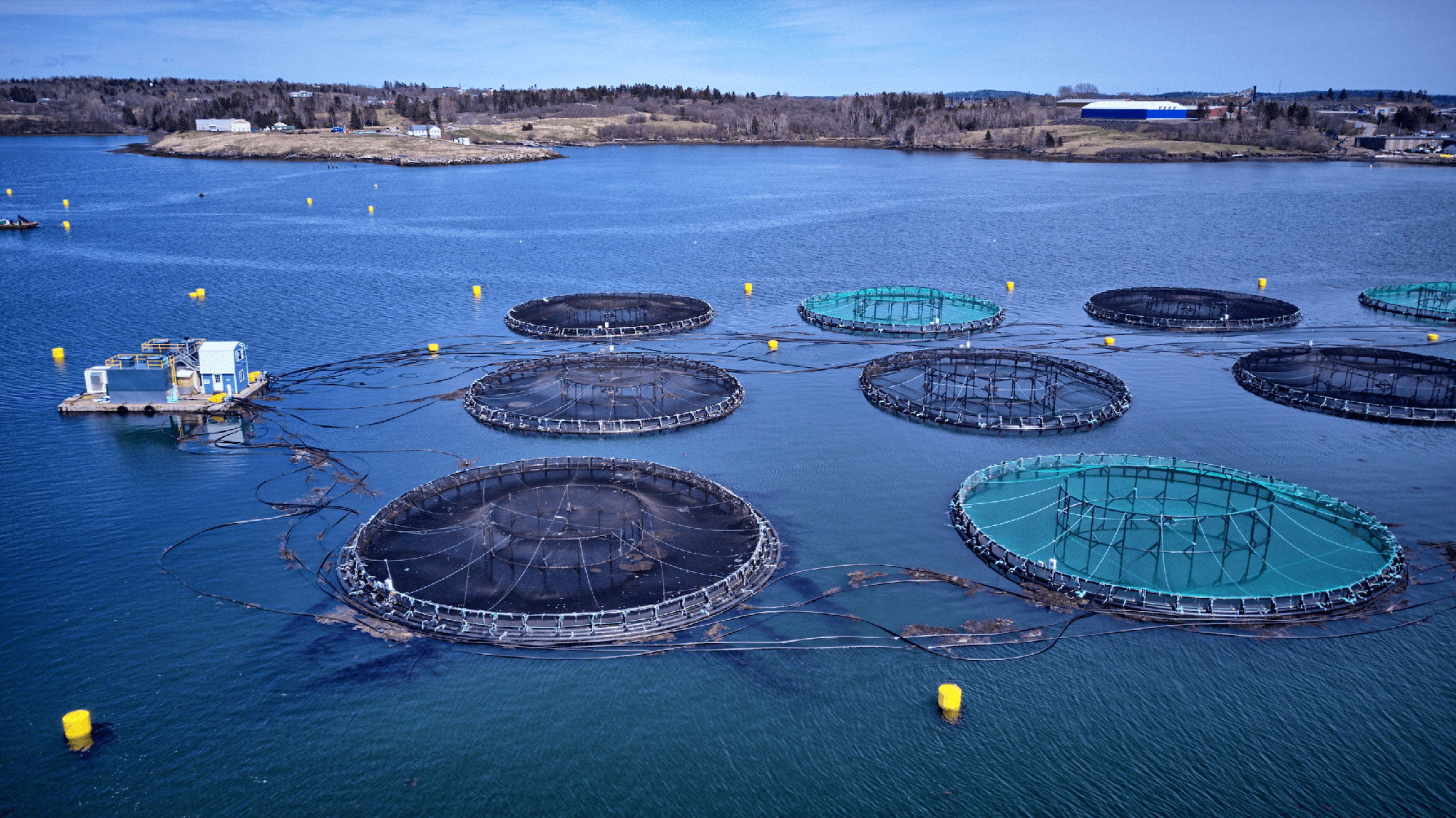After the aquaculture industry realised fish stocks were becoming depleted, many fisheries failed to put in place the structures or knowledge needed to manage fisheries. This is primarily due to not having the tools required to collect and analyse the relevant data.
However, there are now technologies available that provide the necessary analytics for good fishery management and help to improve sustainability, as well as increase safety and efficiency.
Introducing the AquaNode
One such tool is Aqua Power Technologies’ AquaNode Wave Data Buoy. Although there is nothing new with wave monitoring, wave rider buoys have typically been reserved for those who must have the wave data rather than those who would like to have it. These buoys can cost upwards of £70,000 and traditionally use disposable batteries, which is less than ideal for fisheries trying to take a more sustainable approach.
We have been working with Aqua Power Technologies to change this and bring wave monitoring to the masses — guiding the everyday ‘go’ or ‘no-go’ decisions made by workers on a fish farm.
Is it safe to go out on the farm? What will the conditions be like once I get out there? These are questions workers have to ask themselves daily when considering safety out at sea. However, safety can be very subjective; data makes it objective.
When setting up a new farm, managers also have to understand the wave patterns and water flow around the site to understand what conditions the cages will be subjected to and how to control waste produced from the fish.
Four weeks of current data are also required to obtain a licence for a site. Usually, this is done by putting an Acoustic Doppler Current Profiler (ADCP) on the ocean floor; however, if this topples over, the data collection process must start again. Now, it is common practice to produce three months’ worth of data, which favours the more reliable buoy solution.

Behind the technology
The AquaNode itself is a low-cost, accelerometer-based wave sensor. A high-sampling frequency enables accurate wave data measurements, whilst the option for cell and satellite communication ensures the transmission of data in any configuration and in any location.
Wave data captured by the AquaNode includes parameters such as wave height maximum (HMax), wave height average (TAvg), wave height significant (Hs), dominant wave direction (°), wave mean period (Tm), wave peak period (Tp), temperature (°C) and GPS position (DMS). This data is transmitted by either local cell or satellite networks and presented in the HydroData portal — a simple web browser solution that brings in data from multiple sources. Users can modify the criteria to suit their requirements and better understand the conditions on the farm. For example, a certain wave size from a particular direction may cause issues, so the sensor allows users to identify when those conditions exist.
The AquaNode is supplied as a complete system inclusive of a high-density polyethylene buoy, mooring line, mooring hardware, mooring block and a hermetic machine-sealed IP68 electronics pod — providing a durable solution to capturing wave data in harsh conditions. However, the sensor can also be retrofitted to existing buoys to create a cost-effective combined solution.
Unlike traditional data loggers, the self-contained AquaNode sensor solution consumes only around 10 milliamps, meaning it can be powered by a relatively small solar pack. Compared to wasteful single-use battery packs, this is a much more sustainable option for eco-conscious fisheries.
This affordable and repeatable solution generates knowledge and understanding of local conditions, allowing fish farm managers to make more informed decisions that increase productivity, improve safety and sustainability, and maximise efficiency and offshore time.
To find out more about the AquaNode and its use in smart fisheries and other applications, contact us today at sales@hydrosphere.co.uk.








